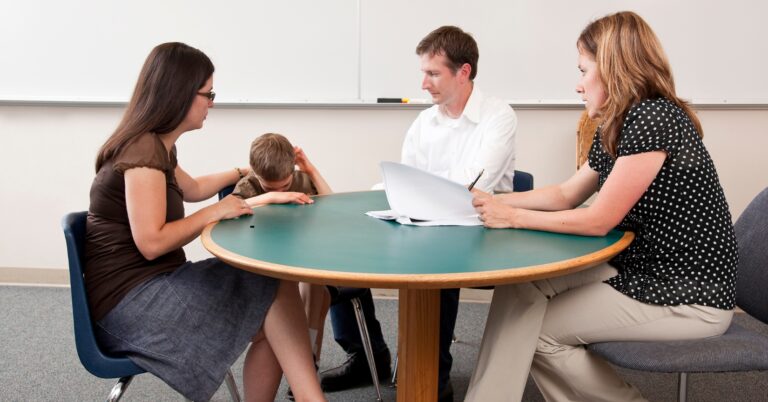Choosing the right preschool can feel overwhelming. It’s about looking beyond the colorful rooms and finger paintings to decipher if the preschool is truly providing a quality education.
The difference lies in certain key elements. If these elements are present, rest assured, your child’s preschool is shaping young minds effectively.
These elements are characteristics of a high-quality preschool, and savvy parents know how to spot them.
In this article, we’ll unpack 8 indicators one by one. This is not being overly analytical; it’s ensuring the best for your child.
Let’s dive into what these elements are and how they contribute to a quality education in a preschool setting.
1) Qualified and caring teachers
A quality preschool experience begins with the people who interact with your child daily — the teachers.
Experienced educators will not only know their ABCs and 123s but also understand the developmental needs of young children.
They create a nurturing environment where your child feels safe to explore, make mistakes, and learn. They’re patient, empathetic, and have a genuine love for children.
Look at their qualifications, too. A degree in early childhood education is a good sign, but it’s their passion for teaching that truly makes the difference.
A teacher’s influence extends beyond academics. They play a crucial role in shaping your child’s social skills and self-esteem.
2) Well-structured curriculum
A well-structured curriculum is another sign of a quality preschool. But what does that look like?
It’s not cramming information into your child’s brain. It’s providing a balanced mix of activities that cater to their cognitive, physical, social, and emotional development.
I remember when I was choosing a preschool for my kid. I visited one where the teacher proudly showed me their detailed lesson plans. They had a perfect blend of storytelling, crafts, outdoor play, and even simple science experiments.
They also had activities designed to promote social skills like sharing, taking turns, and resolving conflicts. That showed me they understood the importance of holistic development in preschool education.
3) Safe and stimulating environment
The physical environment of a preschool plays a significant role in your child’s learning and development. It should be safe, clean, and filled with age-appropriate learning materials.
Did you know that children are more likely to engage in play and exploration if the environment is stimulating and inviting? This is because when children feel safe and comfortable, their brains are more open to learning.
Check if the preschool has clearly defined learning areas with accessible toys and materials. Look for outdoor spaces for physical activities, too. Safety measures like secured entrances and exits, cushioned play areas, and hygienic practices also indicate a quality education environment.
4) Parent involvement
A quality preschool encourages parental involvement. They understand that parents are their child’s first teachers, and their collaboration is vital for the child’s growth.
Look for preschools that have an open-door policy, where parents are welcome to participate in activities, have regular meetings with teachers, and receive detailed progress reports on their child’s development.
Such a preschool shows that it values partnership with parents in shaping the child’s early learning experiences. It’s a clear sign that they’re committed to providing quality education.
5) Child-centered approach
Every child is unique, and a quality preschool recognizes that. It adopts a child-centered approach where teaching is based on the interests and needs of each individual child.
This means the preschool allows children to learn at their own pace, honoring their unique learning styles. It also means that the teaching methods used are interactive and hands-on, promoting active learning.
So if your child’s preschool is all about individual attention and experiential learning, you’re looking at a place that truly values quality education.
6) Emphasis on social and emotional development
We often get caught up in academic milestones, but let’s not forget the heart of early education – social and emotional development.
A quality preschool understands that helping children manage their feelings, build relationships, and navigate social situations is just as important as learning to count or recite the alphabet.
They create an environment where children can express their emotions freely, learn empathy, and practice kindness. They help children build self-confidence and resilience.
When your child’s preschool places emphasis on these aspects, it’s more than just teaching; it’s nurturing young hearts to grow into compassionate human beings.
7) Small class sizes
When it comes to preschool education, the size of the class matters.
I recall my kid’s first day in a preschool with a large class size. They felt overwhelmed, lost in the crowd, and struggled to make connections with their peers and teachers.
We moved them to a preschool with smaller class sizes, and the difference was night and day. They received more individual attention, their teachers knew their strengths and areas of growth, and they felt more comfortable participating in class activities.
8) Regular and open communication
Clear and consistent communication between the preschool and parents is a hallmark of quality education.
This includes regular updates on your child’s progress, timely feedback, and transparency about any issues or concerns. It also involves being approachable and receptive to any queries or suggestions you might have.
When your child’s preschool values open communication, it shows their commitment to working closely with you for your child’s development.
At the heart of it all: Connection
The core of a quality preschool education lies in one simple word: Connection.
This connection manifests in different ways. It’s seen in the relationship between your child and their teachers, the bond they form with their peers, and the link between learning and play.
Aristotle once said, “Educating the mind without educating the heart is no education at all.” This holds especially true in early education.
A quality preschool is not just about ABCs and 123s. It’s about nurturing love for learning, fostering emotional intelligence, and building a solid foundation for your child’s future.
So as you assess your child’s preschool, look beyond the surface. Look for these connections that form the heart of quality education. It’s these subtle yet profound elements that truly make a difference.








